This article is inspired from the Hospitality Resilience Series’ eighth session on “Leading Wellbeing: From nice-to-have to must-have”, held on June 30th 2021, hosted by Jonathan Humphries, Chairman HoCoSo, Chris Mumford, Founder CERVUS Leadership Consulting, Jon Hazan, Executive Coach ATLAS Coaching, with special guest Pekka Pohjakallio, Business Development Director and Executive Mentor at HINTSA Performance.
In November 2020, HoCoSo launched the Hospitality Resilience Series as we were looking to inspire and help build resilience and inner immunity for the hospitality, travel and tourism sector professionals. Throughout this series we managed to challenge existing mindsets, exchanged personal insights, discussed practical solutions and provided a forum for shared experiences that we will use to help build personal solutions.
The hospitality sector is currently enduring huge adversity and is faced with a long challenging road ahead. This environment is placing new burdens and strains on leadership and bringing the need for personal resilience and inner immunity into sharp focus.
Nine episodes later, we close SEASON 1 of this wonderful journey with plans underway for an even more-jam packed SEASON 2 coming soon. During this first season, we explored the many aspects of resilience like nutrition, adaptability, intention living, performance, mindfulness, the importance of sleep, and finally wellness. All of our previous sessions are available in the form of replays, podcasts and articles.
In relation to our final episode in season 1, we address how the COVID-19 pandemic has shone the spotlight brightly on the topic of employee wellbeing. Organisations have recognised the need to respond and to take care of their people. To lend professional insight on the matter, we talked with Pekka Pohjakallio to discuss the world of hybrid work, what companies are doing to improve employee wellbeing, how it impacts performance and why leaders need to take care of themselves.
Pekka brings a wealth of experience in executive leadership and is an executive mentor and business development director at Hintsa. He is a highly regarded keynote speaker and a past nominee for ‘Speaker of the Year’ by Finnish speaker agency Speakerforum. Well-known for its work in Formula One with drivers such as Lewis Hamilton, Hintsa Performance is a global leader in human high-performance coaching. The firm helps clients achieve sustainable high performance with methods proven in elite sport and Fortune 500. Hintsa today works with, if not all, then the vast majority of Formula One drivers and teams. In fact, over the last six seasons, 99 percent of the races have been won by Hintsa affiliated drivers.
The following questions were posed by the hosts and audience during the webinar.
Q: What is your definition of superhuman and how does that correlate with having it all?
A: As grown ups, we operate under the false impression that we constantly need to be performing well at work, we need to love our spouses as much as we can and be dedicated to our parents. One of my colleagues said, we can have it all, but not at the same time. On the other hand, many professionals think that if one were to enter a sport, they should go for the most demanding kind. They don’t realise that we have limited resources.
Q: How do we find the balance between peak performance and the best life quality then?
A: At Hintsa, we believe and promote the idea that a better life is what opens the door to better performance, not the other way round. To elevate the conversation, consider that when we talk with companies and individuals at the top of their game, we often talk about the concept of peak performance. In a 1999 study, researchers were able to demonstrate that humans need a certain amount of push, stress and stimulus to be able to live a good life and perform. If you don’t do anything about it, you bore out. If you do too much, you burn out. And, if you aim for peak performance, you risk driving yourself to the edge. The idea is that real performance comes from escalating and stretching your comfort zone accompanied by focused attention and positive stress. In this context, finding the right time to rest during or after work days, weekends, holidays becomes the challenge.
Q: How do the Finns approach that matter?
A: Finland is a strange place, which basically closes for July, so all Finns go to their summer cottages to be alone throughout the holiday unlike other Europeans who go to the beach together. We want to be alone. A neurologist said it nicely that, the Finns wait 11 months for summer and when the holiday starts, they collapse, because they are so tired. They recover for 10 days and then start to be anxious about getting back to work. That doesn’t exactly help the recovery process. Instead, taking an extended weekend every month would go a long way in oscillating between stretching and taking it easy. For that reason, we look at work versus rest and focus. One mode, which we call ‘normal time’, is where we try to find the routine that works best for each individual.
Q: Is there then a universal system pro-athletes use to move between the stages?
A: Athletes, have this concept called “periodization”, which basically means splitting the training into blocks or cycles of training. McKinsey did a study in China where after the first wave of COVID research found that blurring your working time with personal time has been one of the most stressful things. And one of the tools there is that we build routines that help us to separate. So if you work from home, then fake commute so that you make a routine in the morning. I used to walk around the block before the working day to signal my brain that now work starts.
Q: What role does focus play?
A: One of the most important realizations, according to studies by Dr. Erichson, is that humans can focus a maximum of four hours a day, so everything outside that timeframe is neither focused nor productive. The question becomes, how do we chop the day in a way to allow for breaks and how do I schedule my routine tasks for those times? I think it’s important to think about habit formation. Habits, basically require a trigger, which could be a specific time of day, a place, an emotion, or even a question. That kind of primes our brain and allows us to detach.
Q: Are there any other elements that impact focus?
A: ‘Chrono time’ has a huge impact. In other words, some individuals are morning people, others are evening people. I discovered that I’m an evening person, which means that my focus time starts round 4 in the afternoon. So if there is something I need to focus on, I don’t even try before 4 p.m., because I know nothing’s going to happen. It’s just how my brain works, which means I need to schedule more routine things throughout the day while conserving my real focus for the evening. That helped me to stop agonizing in the morning.
Q: How do you swing that when your professional responsibility is not always in sync with your ability to focus?
A: It’s been particularly tricky, I admit, especially during COVID when you don’t have a possibility to see what’s going on in your team members’ lives. My boss, for example, lives in London and I live in Finland. She is very articulate that she might have odd working hours. And then she explains why she does and then says this doesn’t mean I have to follow her schedule, rather encourages me to find mine.
Q: Has your basic role of manager changed during the pandemic?
A: An alarming number of our managers have been complaining that an overwhelming number of clients are opening more than ever about their feelings, emotions and burdens. Considering the circumstances, the managers believe that acknowledging and accommodating these requests is simply out of the question. My reply was that we need to have more time for being present for people. We, as managers, need to get the high performance out of the teams, we need to understand that the manager’s role is to satisfy certain needs of the team members. That is a little bit of a new way to look at the management. But people want security, safety. They want to grow. They want to have autonomy and a manager’s job is to be there to provide that. It is a full-time job.
Q: We think, well-being goes hand in glove with performance, but it’s not always the case, especially through an organizational lens, so what have you encountered around this paradox?
A: I don’t like the word well-being, but I can’t think of a better word, so let’s use it. The problem with well-being and your mental image is a hammock. It’s the drink with an umbrella. It’s your yoga class, all of which are good things. To elaborate, I had a great mentor and leader at Nokia who said to me once, the senior leader is a person who can hold two conflicting thoughts simultaneously in his or her head and still be open. Each on its own is good, but put together you get a picture of a hammock, which doesn’t work, because well-being should be part of the job of an organization, not a separate individual activity.
Q: Does that imply less working hours and more quality time?
A: Unfortunately no, because many companies still have a culture of extensive working hours. For example, in my home country, a reputed senior leader of an international company concluded that the only way for Finland to compete against China and the US is to enforce 80-hour work weeks and do entirely away wih the summer holiday. My question in response was, do you really think that’s the way when we have six million people in the country expexting to clock more work hours than four billion people? So there remains that notion of more is better. However, some knowledge based industries are starting to realise that a company such as ours is dedicated to working wih management consultancies and law firms to resolve these issues. They are learning that having such a system is necessary. And I would say in hospitality, the need to be present for your customers and guests is important. So, if you are having 70-hour work weeks, then you will not be performing in the best possible way. However, when you start that discussion, you then gain the ability to build a new narrative, one initially based on defining what wellbeing actually means in each individual context.
Watch the full session here:
Q: From an organizational point of view, how do you educate each organization around what well-being in its respective culture means?
A: We’re working on a hundred-year-old tradition and it’s very hard to change. While grappling with that, a friend of mine reminded me saying, my job is not to change my clients’ system. My job is to help them flourish in the system that they have selected for themselves. From the perspective of a management consultancy, we accept that the culture is changing really slowly. Keep in mind that after a 60-hour work week, nothing is improving your productivity anymore. And after 70 hours, you’re productivity is declining. So, we start by talking about the little things to summarize what is normal mode, mission mode, recovery mode and how do you start to build it.
Q: Do different people use different approaches to navigate between these four modes?
A: Absolutely. One of our coaches who used to coach Sebastian Vettel, said that being a Formula One coach is like marriage without the benefits. You kind of live their lives together without revealing any secrets. You try to adapt those things in the best possible way. And the biggest job of a coach is to build this bubble around the driver so that you can get your focus hundred percent where they need to be. You build the base to fit in the best possible way to allow that driver to perform at their best. To achieve that, some drivers need to be really calm while others need to be irritated a little to get their adrenaline and cortisol up. It depends on the driver.
Q: Could we explore the psychological aspect of coaching Formula One drivers based on optimizing performance rather than maximizing performance.
A: The one really important thing, which we often do workshops about, is we show a picture of a Formula One steering wheel. There are 64 buttons, the car is pushing 300 km/hr for two hours with a cockpit temperature reaching 60 degrees celcius. Yet still, every passing second a decision is made on the fly. Now compare that to a business setting where you need to talk on the phone, email, take notes and all that. How do you focus? There are different mechanisms to achieve that, I just have to find the most suitably-efficient one. In other words, I eliminate everything that may cause any kind of distraction no matter how minute.
Q: After everything that has come to pass, focus on work is quantitative, not qualitative, why?
A: We have a tendency to associate accomplishment as one of the key drivers of motivation. So, when you don’t have the same result that you used to, you automatically clock-in more hours hoping you can compensate. At least I can say to myself on Friday night that, hey, I don’t know what I got done this week, but at least I worked a lot. That’s not the case. Hence, we should learn to have much more targets for ourselves. What I’m going to achieve today, is related to my bigger goal and that would start to help us to realize, I am getting stuff done, I don’t have to work an excessive amount of hours.
Q: What is the process to achieve that?
A: We use the inter-moda system, which basically is a process where we breakdown six elements of an individual’s daily activities, namely, health, physical activity, nutrition, sleep, recovery and bio-mechanics. In the middle, we have a thing called the core, which is basically an answer to three questions. Do you know who you are? Do you know what you want in life? And are you in control of your life? Most of my time, the focus question is, who you are. We talk a lot about that, because many of us have lived the fast paced career. Life has happened and it’s hard to know what you want and what your goals are unless you know who you are and how does that link to my life purpose or my mission statement. That is an extremely fruitful conversation with oneself. Only then can one start to put down the soft targets. And this links beautifully to one of the great motivation theories called the ‘Self Determination Theory’, where autonomy or sense of autonomy is one of the key motivators. The system is based on initially registering small daily targets then building on top of them what we actually want. Keep in mind that those targets are difficult to set if we originally don’t know what we want or who we are.
Q: What role does age play in answering these fundamental questions, which change over time?
A: When you are twenty five, ‘will’ is pretty black and white before you arrive at the realization that there exist shades of gray in between. I personally really fought against changing some of my values, because I thought that values are the same as I am. Then I realized, I’m evolving, so too are my values and that is quite exciting.
Q: How can we better understand the nuances of well-being and how does that affect the workplace?
A: The key is in demonstrating a correlation between your changes towards well-being and your KPIs, so you have two dimensions. Now, if you only have hard measures, you become this arrogant, too tough of an organization. If you only think about well-being, you become a nice place to work where nothing gets done. So the optimal is when you have both. I think linking well-being to real results of the company often helps. Secondly, is experimentation, which we consider similar to habit formation. If you try to change your life at once, it’s just too overwhelming. We started this remembrance. Two of our employees were checking in on all our management teams and we asked them a simple question, namely, how are you doing? Though most gave two-word responses, they nonetheless felt their feelings being acknowledged. They also began to realise that though they may have had a bad day at the office, they nonetheless feel they are good people. That simple approach has changed our management team completely. We are now more open, even much closer than we were when we were meeting physically. So trying these little things and linking them to the business result is probably one of the ways we achieve successes.
Key Takeaways
- As grown ups, we operate under the false impression that we constantly need to be performing well at work.
- At Hintsa, we believe and promote the idea that a better life is what opens the door to better performance, not the other way round.
- Humans need a certain amount of push, stress and stimulus to live a good life and perform.
- Real performance comes from escalating and stretching your comfort zone accompanied by focused attention and positive stress.
- Taking an extended weekend every month would go a long way in oscillating between stretching and taking it easy.
- If you work from home, then fake commute so you make a routine in the morning. I used to walk around the block before the working day to signal my brain that now work starts.
- One of the most important realizations, is that humans can focus a maximum of four hours a day, so everything outside that time frame is neither focused nor productive.
- As managers, we need to have more time for being present for people.
- People want security, safety and a chance to grow by having autonomy and a manager’s job is to be there to provide that.
- Unfortunately, many companies still have a culture of extensive working hours.
- My job is not to change my clients’ system; my job is to help them flourish in the system that they have selected for themselves.
- After a 60-hour work week, nothing is improving your productivity anymore and after 70 hours, you’re productivity is declining.
- We have a tendency to associate accomplishment as one of the key drivers of motivation.
- It’s hard to know what you want and what your goals are unless you know who you are and how does that link to my life purpose or my mission statement.
- Linking well-being to real results of the company often helps.
> Join the Hospitality Resilience Series‘ community on LinkedIn and on Instagram.
Our thanks to Yves for his time, his thoughts, and his excellent advice.
About the author
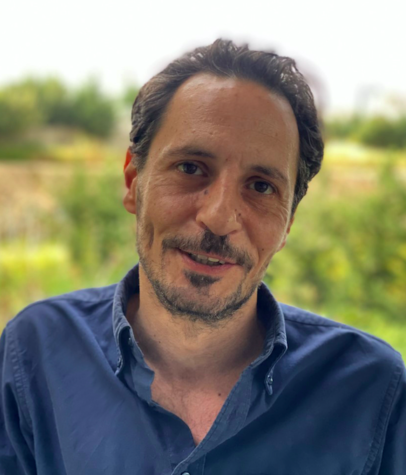 Jad Haidar
Jad Haidar
Leveraging over 20 years of writing as a seasoned journalist, Jad has interviewed globally reputed personalities in the advertising, communication and hospitality industries. He is a storyteller at heart, crafting balanced and informative articles for readers. He was the features writer for ArabAd and Hospitality News magazines in the Middle East for the past 10 years and is currently a webinar writer for HoCoSo. Before becoming a journalist, he spent 5 years teaching English. He holds a B.A. in English Literature and communicates in 4 languages.
About HoCoSo
HoCoSo are advisors with a difference.
We create tailor-made and innovative solutions for clients’ hospitality-led projects by bringing together the optimum team of sector specialists.
Jonathan Humphries, Chairman and Owner of HoCoSo, and his direct team specialize in the extended-stay, co-living, and hotel-alternatives hospitality market; luxury, lifestyle and boutique hotels; and resort developments in Europe, the Middle East and Africa (EMEA). Our strengths lie in the following core services:
- Product & Concept Creation, for portfolio & individual asset developments.
- Strategic Development Projects with a focus on new-market / new-concept business expansion planning, operator selection, market and financial feasibility studies.
- Transformative Asset Management for brand re-positioning, asset re-evaluation and concept re-structuring.
- Hospitality Education for companies and academic institutions, with a focus on bespoke course development, training and teaching.
- Workshops, Keynotes and Conference Moderating for boards, leading international conferences and incubators.
During the covid19 crisis, HoCoSo launched HoCoSo CONNECT, an initiative aimed at bringing the industry together to brainstorm and collaborate; HoCoSo CONVERSATION, a podcast channel encouraging the discussion with thought leaders from around the globe, for the hospitality industry; and, in collaboration with Atlas Coaching and Cervus Leadership Consulting, we also launched the Hospitality Resilience Series , a combination of online events, insights and discussions aimed at helping build your personal resilience and inner immunity.




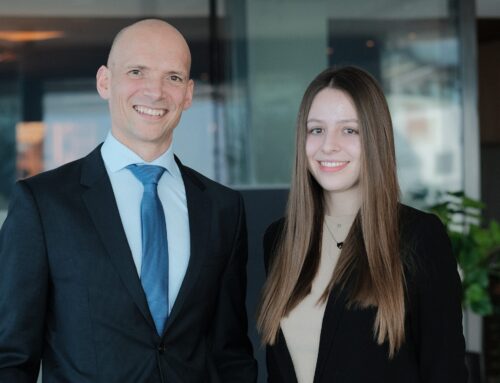


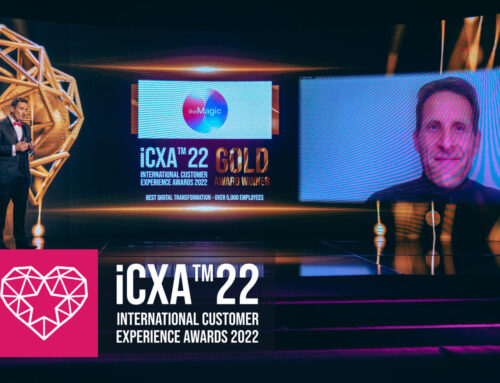
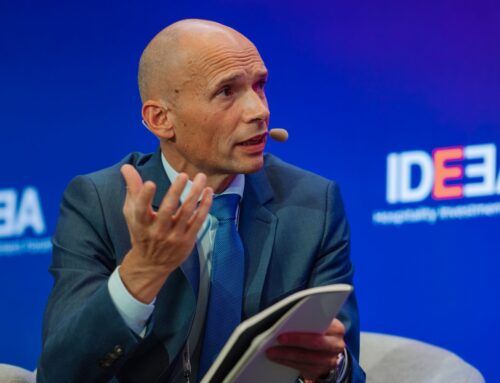
Leave A Comment